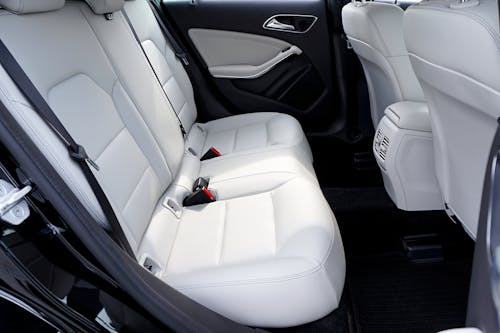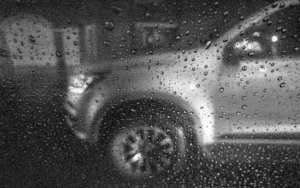A wet car’s interior is more than just a bother; it may serve as a haven for a number of issues that can soon get out of hand. How to dry out your wet car interior? Excess moisture trapped inside your vehicle can discolor upholstery, distort interior surfaces, and foster the growth of mold and mildew, leading to ugly water stains and lingering musty smells.
We’ll show you how to dry out your damp car’s interior step-by-step in this extensive article. Everything you need to know will be covered, including how to use fans, remove standing water, apply moisture-absorbing solutions, and get rid of odors. Pro advice to expedite the procedure, preventive measures to keep the interior of your car dry in the future, and tools and items that make the task easier will all be covered.
The Importance of Quickly Drying Your Car’s Interior
Keeping the inside of your automobile damp for an extended time might cause:
- Growth of mold and mildew in 24 to 48 hours
- Carpets and upholstery with persistent stains
- There is electrical damage beneath the flooring.
- Odors that persist for weeks
- Decline in the value of resale
Therefore, knowing how to effectively dry out a damp car interior is essential to protecting both your automobile and your pocketbook.
How to dry out your wet car interior
A spilled drink on the seat, a leaking sunroof, leaving windows open during a storm, or even unanticipated water damage can all cause moisture to enter your vehicle. Time is of the essence, regardless of the cause. A comprehensive and prompt response might make the difference between an expensive repair job and a straightforward cleanup. If ignored, it can also lead to electrical problems, lower the value of your car when you sell it, and cause health problems, particularly for people who have asthma or allergies.
Step 1: Drain Extra Water. Use towels and a wet/dry vacuum right away.
Take quick action as soon as you see that the interior is damp:
- Use absorbent cloths or microfiber towels to absorb standing water.
- Water may be removed from upholstery and carpets with a wet/dry shop vacuum. Particular care should be paid to spaces beneath the seats and in cracks in the floorboards.
- Pro Tip: It could be risky to use household vacuums unless they are designed for wet surfaces.
Step 2: Take off the seat covers and floor mats
Remove everything that can be removed, such as
- Fabric or rubber floor mats
- Seat coverings
- Liners for the trunk
- If at all feasible, dry these items separately in the sun. Air circulates and the process is accelerated when they are hung vertically.
- Important: Before drying, immerse mats in a mixture of warm water and white vinegar if they are completely soaked and begin to smell.
Step 3: Promote Air Movement
When it comes to drying a wet automobile interior, airflow is your best friend. Here’s how to make the most of it:
- Make use of fans and open windows.
- If the weather permits, open all of the car’s doors and windows.
- Install box fans or portable fans in the damp regions.
- Park your automobile in a garage if you have one, and leave a fan running all night.
- Utilize a powerful blower fan to move air beneath seats and flooring for a more effective dry.

Step 4: Make use of a moisture absorber or dehumidifier
Try the following to get the moisture out of the car’s air:
- Install a Dehumidifier in the Car
- For a few hours, run a tiny electric dehumidifier inside the enclosed vehicle.
- This technique works particularly well in humid environments.
- Employ Products That Absorb Moisture
- To absorb any remaining moisture, scatter baking soda boxes, silica gel packs, or DampRid containers throughout the vehicle.
- You can keep these in your car overnight or while you’re not using it.
Step 5: Completely Dry the Carpets and Upholstery
Seat foam or padding under the carpet may retain moisture even if the surface appears dry. What to do is as follows:
- If at all feasible, raise the carpet a little to allow air to flow underneath.
- Take care when using a hair dryer or heat gun on seats; avoid overheating to prevent fabric damage.
- To expedite the drying process, place the car in direct sunlight with the windows cracked open.
Step 6: Get Rid of Odors and Stop Mold
A musty odor is an obvious indication of mold or residual moisture. To update the inside, follow these suggestions:
- Use an enzyme purifier.
- To break down organic compounds that are creating odor, use an enzyme-based auto cleaning.
- Pay attention to places where water accumulated or spills were known to occur.
- Clean with steam (if required)
- Consider hiring a professional steam cleaning service to thoroughly clean and sanitize your upholstery and carpets if the odor continues.
Step 7: Check for Damage and Mold
Once the interior of your automobile has dried, thoroughly check for:
- Green or black patches (development of mold)
- Flooring that is warped
- Rusty bolts for seats
- Wet padding beneath carpets
- Use a mildew cleanser or hire experts for treatment if mold is discovered. It might do greater harm the longer it is left untreated.
Bonus: Why Do Car Interiors Get Wet?
Knowing the typical causes enables you to avoid them in the future:
- Leaving the sunroof or windows open in the rain
- Driving through thick water or flooding
- trunk gaskets or leaky door seals
- Food or drink spills
- Heater or air conditioner condensation
Preventive Advice: Keep the Interior of Your Car Dry
Here are some useful preventative techniques to help you avoid having to go through the drying process again:
- Make use of weatherproof floor mats.
- Compared to carpet mats, rubber mats are easy to remove and clean and retain moisture.
- Examine and replace door seals since water leaks might occur from worn weatherstripping. Regularly check the seals on the doors, trunk, and sunroof.
- Park under cover.
- Use a car cover in inclement weather or store your vehicle in a garage whenever you can.
- Use moisture absorbers in your car.
- To keep the car dry throughout the year, keep reusable desiccant bags or other moisture absorbers inside.
Final Thoughts
Every automobile owner needs to know how to dry out their wet interior. How to dry out your wet car interior? Your car can avoid long-term harm and unpleasant repercussions by acting quickly, using the appropriate equipment, and adhering to the right procedures. Whether it’s a small spill or a large water intrusion, prompt action is crucial.
Avoid allowing moisture to degrade the comfort or market value of your vehicle. You can address the issue head-on and resume driving a dry, clean, and odor-free car by following the above procedures.
Frequently asked questions (FAQ)
1. How much time does it take for a wet car’s inside to dry out?
Depending on the extent of the moisture, the materials impacted, and the techniques employed, drying out a wet automobile interior usually takes 24 to 72 hours. The process can go more quickly if you use powerful fans, a dehumidifier, or park the car in the sun with the windows are open. It might take a few days, though, if the water has seeped into the flooring underneath, the padding in the carpet, or the seat cushions. Preventing mold, mildew, and long-term damage to your car’s interior components requires consistent airflow and the removal of any retained moisture.
2. Can water cause mold to develop in an automobile?
Indeed, mold may grow inside a car within 24 to 48 hours after being exposed to water, particularly in warm, humid conditions. Dark, moist places like behind seat cushions, under carpets, or in trunk spaces that are left wet for an extended period of time are ideal for the growth of mold. It can cause health problems like allergies, respiratory disorders, and skin irritation if it is not treated right away. Additionally, mold results in noticeable stains and persistent smells. Since completely eliminating moisture is the only method to stop mold growth and preserve a healthy atmosphere inside your automobile, it is imperative that you take quick action when drying off a wet interior.
3. Will my car’s stink and moisture be eliminated by baking soda?
Indeed, baking soda is a safe, all-natural way to remove odors and absorb moisture from a damp car’s interior. To remove water and eliminate bad odors, you can sprinkle it straight onto damp upholstery or carpets and leave it there overnight. Vacuum it thoroughly once it has had a chance to absorb the moisture. Localized moist areas brought on by spills or leaks benefit greatly from the usage of baking soda. Use it in conjunction with other drying methods, such as fans or dehumidifiers, for optimal effects. It’s a cost-effective and environmentally responsible way to keep the interior of your car dry and fresh.
4. Can a car with a damp inside be driven safely?
It is not advised to drive with a damp car interior, even though it is theoretically safe. Windows that are hazy due to wet carpets and upholstery can make visibility hazardous. If left untreated, moisture trapped in the cabin can also lead to mold growth and offensive odors. Furthermore, over time, damp spots close to electrical parts beneath the seats or floor may result in failures. Short journeys might be okay if the interior is only mildly damp, but extended use in these circumstances could cause long-term harm. Before starting to drive the car normally again, it is best to completely dry off the interior.
5. Should I hire a professional to dry the inside of my car?
It’s a good idea to contact a professional detailer or restoration agency if the interior of your automobile has been severely drenched or damaged by flooding. To get rid of stubborn moisture and stop mold, professionals use industrial-grade tools like extractors, powerful dehumidifiers, and ozone machines. Additionally, they are able to carefully pull carpets and examine hidden damage that the typical automobile owner might not notice. Although do-it-yourself techniques are effective for small amounts of water exposure, expert assistance is frequently required when the water has seeped into insulation, reached wiring, or produced a lingering odor. You can avoid future expensive repairs and save time and effort by seeking professional help.








